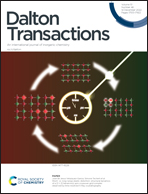In situ encapsulation of abundant WP/Ni2P heterointerfaces in N,P co-doped two-dimensional carbon frameworks for boosting hydrogen evolution electrocatalysis†
Abstract
Rational design of an efficient hydrogen evolution reaction (HER) electrocatalyst continues to be a significant challenge for large-scale application of renewable electrochemical energy devices. Herein, an in situ interface engineering strategy is elaborately developed to construct an advanced multi-active component HER electrocatalyst, in which abundant tungsten phosphide (WP) and nickel phosphide (Ni2P) heterogeneous interfaces are synchronously encapsulated in nitrogen and phosphorus co-doped two-dimensional carbon frameworks (WP–Ni2P@NPC) via convenient solid-phase reaction and subsequent high-temperature pyrolysis. In particular, the type of solid precursor has a critical impact on the formation of a flake-like nanoskeleton and abundant WP/Ni2P heterointerfaces. Moreover, the integration of metal phosphide leads to a high graphitization degree of the carbon backbone. Benefitting from the favorable material characteristics of the nitrogen and phosphorus co-doped graphitic nanostructures, and the heterogeneous interface interaction between WP and Ni2P, WP–Ni2P@NPC possesses superior HER electrocatalytic activity to a single active component catalyst. This work offers an efficient strategy for designing efficient catalysts.



 Please wait while we load your content...
Please wait while we load your content...